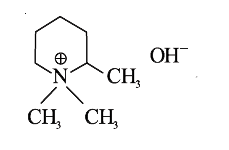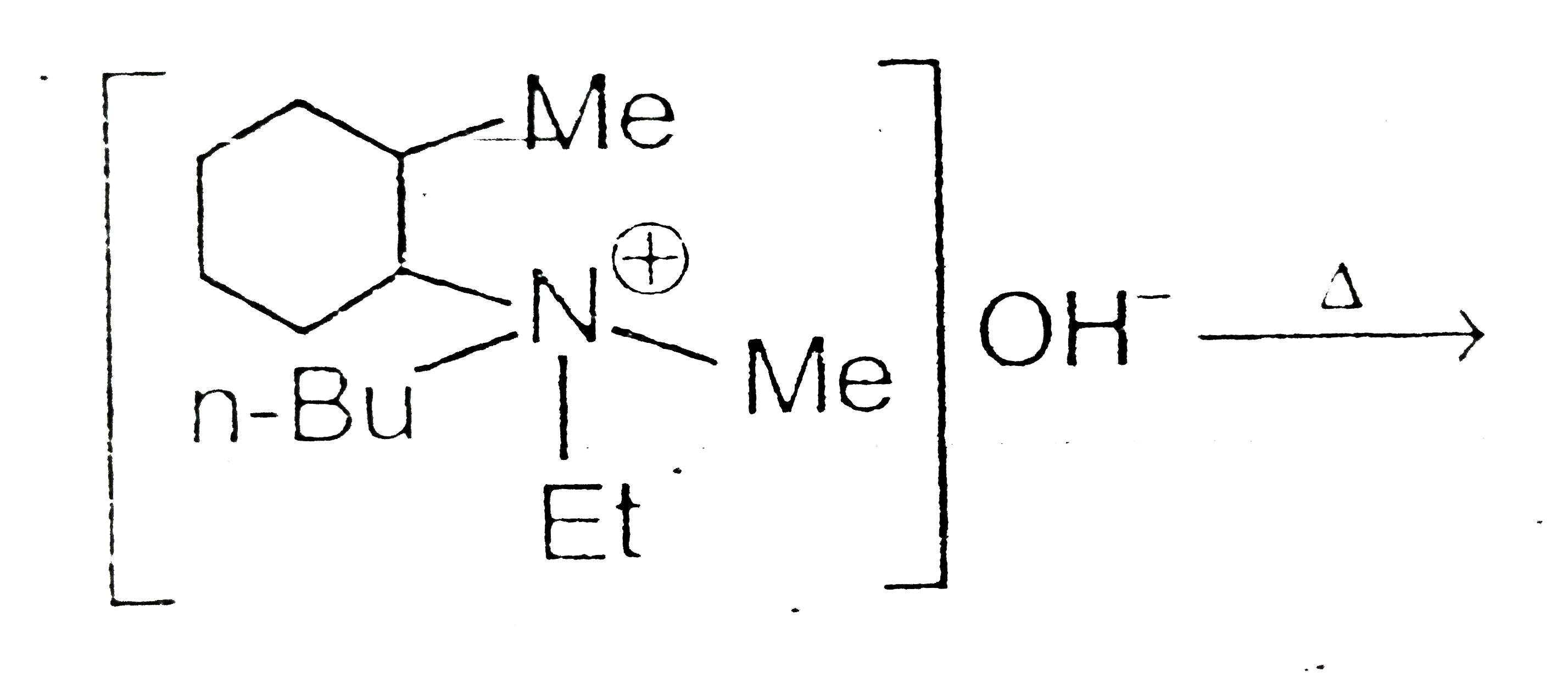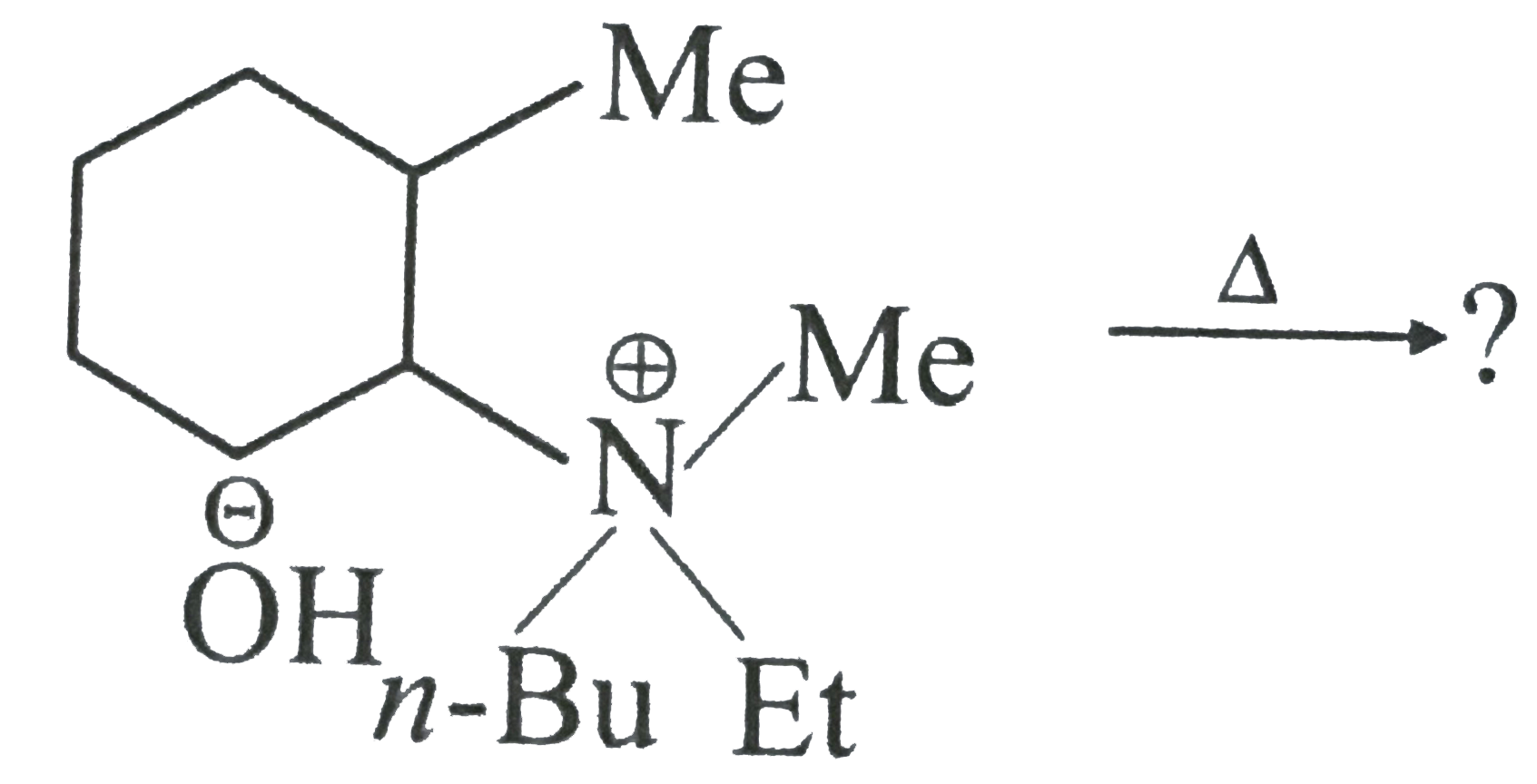What product (s) is (are) obtained when 2 - bromobutane undergoes an elimination reaction with a strong base ?
Only 1 - butene
Only 2 - butene
1 - butene and 2 - butene , with more 1 - butene
1 - butene and 2 - butene , with more 2 - butene
The correct Answer is:C
To determine the products obtained when 2-bromobutane undergoes an elimination reaction with a strong base, we can follow these steps:
Step 1: Identify the structure of 2-bromobutane
2-bromobutane is a four-carbon alkyl halide with a bromine atom attached to the second carbon. Its structure can be represented as follows:
CH3−CH−CH2−CH3∣Br
Step 2: Understand the elimination reaction
An elimination reaction involves the removal of a leaving group (in this case, bromine) and a hydrogen atom from adjacent carbon atoms, leading to the formation of a double bond. A strong base, such as alcoholic KOH, is typically used to facilitate this reaction.
Step 3: Identify the β-hydrogens
In 2-bromobutane, the carbon atoms adjacent to the carbon bonded to bromine (the α-carbon) are the β-carbons. The β-carbons are the second and third carbons in the chain.
Step 4: Determine the possible products
When a strong base removes a hydrogen atom from a β-carbon, two possible alkenes can be formed:
1. 1-butene: This product is formed when a hydrogen atom is removed from the β-carbon adjacent to the α-carbon (the first carbon). The structure is:
CH2=CH−CH2−CH3
2. 2-butene: This product is formed when a hydrogen atom is removed from the other β-carbon (the third carbon). The structure is:
CH3−CH=CH−CH3
Step 5: Analyze the stability of the products
2-butene is more stable than 1-butene due to the presence of more alkyl substituents around the double bond (it has more α-hydrogens). Therefore, 2-butene is the major product, while 1-butene is the minor product.
Conclusion
The products obtained from the elimination reaction of 2-bromobutane with a strong base are:
- 1-butene (minor product)
- 2-butene (major product)
Final Answer
1-butene and 2-butene are the products obtained when 2-bromobutane undergoes an elimination reaction with a strong base.
---
2-bromobutane is a four-carbon alkyl halide with a bromine atom attached to the second carbon. Its structure can be represented as follows:
An elimination reaction involves the removal of a leaving group (in this case, bromine) and a hydrogen atom from adjacent carbon atoms, leading to the formation of a double bond. A strong base, such as alcoholic KOH, is typically used to facilitate this reaction.
In 2-bromobutane, the carbon atoms adjacent to the carbon bonded to bromine (the α-carbon) are the β-carbons. The β-carbons are the second and third carbons in the chain.
When a strong base removes a hydrogen atom from a β-carbon, two possible alkenes can be formed:
2-butene is more stable than 1-butene due to the presence of more alkyl substituents around the double bond (it has more α-hydrogens). Therefore, 2-butene is the major product, while 1-butene is the minor product.
The products obtained from the elimination reaction of 2-bromobutane with a strong base are:
- 1-butene (minor product)
- 2-butene (major product)
1-butene and 2-butene are the products obtained when 2-bromobutane undergoes an elimination reaction with a strong base.
Similar Questions
Knowledge Check
Which of the following compounds cannot give E2 reaction with strong base?
A B
B C
C D
D
What are the product obtained when butene undergoes addition reaction of HBr in different conditions.
(i) In absence of peroxide
(ii) In presence of peroxide
View SolutionWhat product is obtained when Benzencarbonitrile is hydrolysed.
View SolutionThe magor product formed in the elimination reaction of
 is:
is:
View Solution
The alkene formed as a major product in the above elimination reaction is
View SolutionThe products obtained in the reaction

View Solution
The alkene formed as a major product in the above elimination reaction is:
View SolutionGive the IUPAC name and structure of the amine obtained when 3-chlorobutanamide undergoes Hoffmann- bromamide reaction.
View Solution